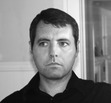Hněvín Castle
From Prague Unbound , a glance at the castle that once imprisoned the nefarious Edward Kelley…

Hněvín Castle dates back to the 13th century, where it was built on a hill overlooking the village of Most, about 48 miles northwest of Prague. It was used as a prison by Rudolf II, his most notorious prisoner being alchemist Edward Kelley, who reportedly died after a failed escape attempt from one of its towers (not quite what happened, we’re afraid). During the Thirty Years War, the castle begin an important strategic focal point, with both sides fighting over it and destroying most of Most village in the process before the Swedes eventually conquered it. After the war ended, the people of Most convinced Ferdinand II to allow them to tear the castle down so that it would not be a target in any future conflicts and their village could for once be left in peace. When maurading armies no longer seemed a threat, the castle was rebuilt around 1900.
The village of Most has a troubled history. In 1895, several houses and the people inside were engulfed in quicksand. During WWII, the area suffered heavy Allied bombing because of its role in supplying Germany with petroleum. After the war, Most became a center of lignite mining and during the Communist era became cloaked in a black cloud of pollution. In the mid-60s, the town was relocated to make room for more mines, a process that involved destroying historical monuments dating back to the 15th century, wrecking hundreds of houses, and moving the massive, 13,000-ton Church of the Assumption of the Virgin Mary, intact, half a mile away – an engineering feat that involved 53 trucks moving along specially constructed rails at a speed of about 30 yards a day.
Since the end of the Communist era, Most has suffered heavy unemployment and is known for the number of people living in paneláks – large concrete tenement housing complexes that were in Most’s case created in the wake of all the buildings Communist authorities destroyed when moving the town. The most notorious among them is Chánov, a derelict 13-building complex that has become a Romany ghetto and lacks amenities like elevators, windows, and running water.

Some say every misfortune that has befallen Most can be traced to Kelley’s imprisonment, that he must have put some sort of evil curse on the town that once confined him.
But if Kelley’s magic was as powerful as all that, don’t you think he would’ve managed to escape?
(Photo of Hněvín Castle via Jan Suchý, photo of Chánov via Josef Sábl, both Wikimedia Commons)



